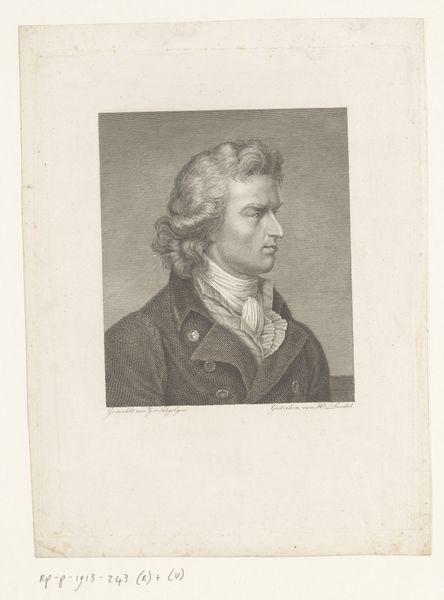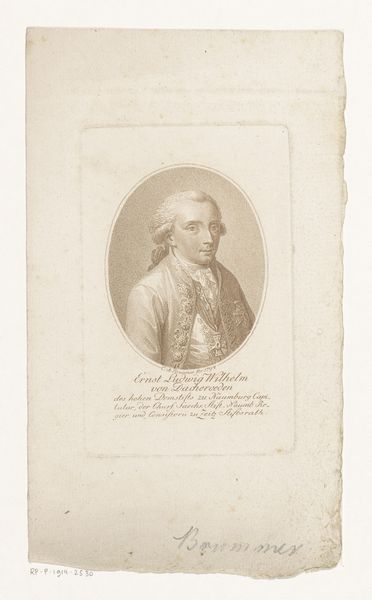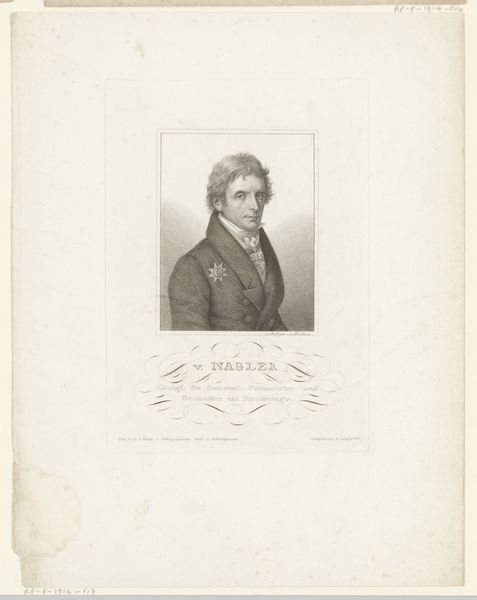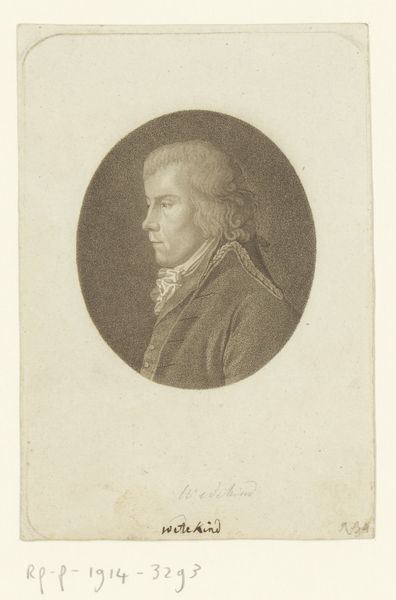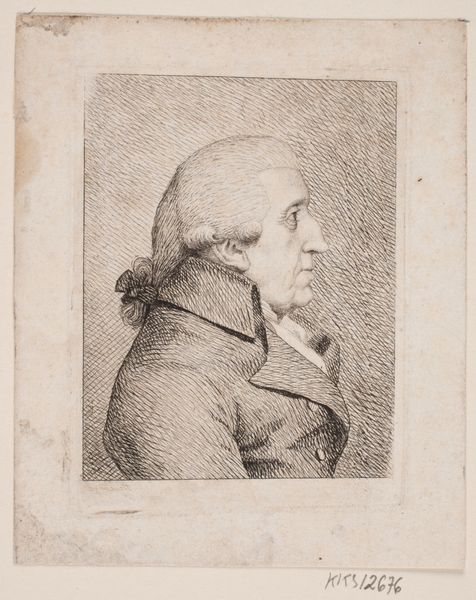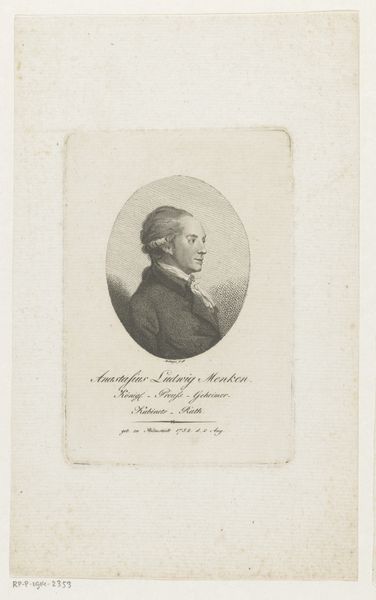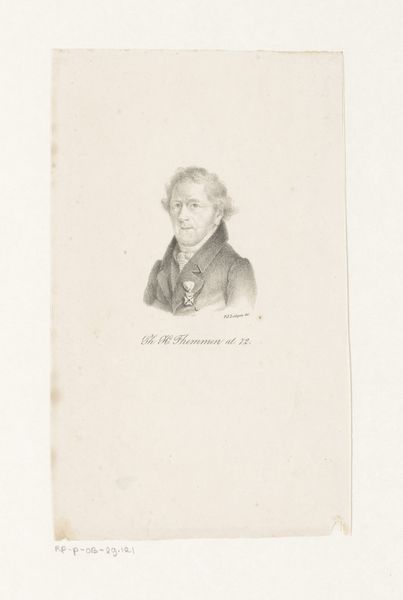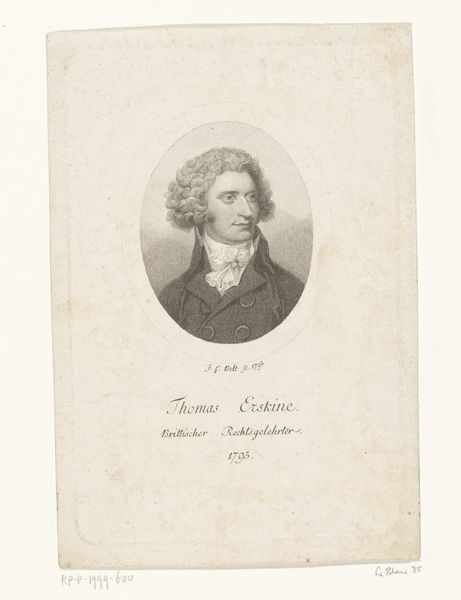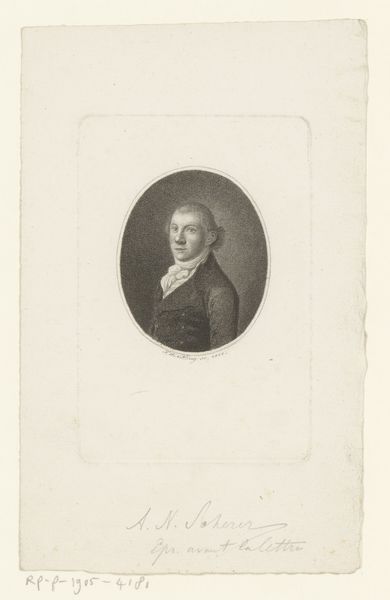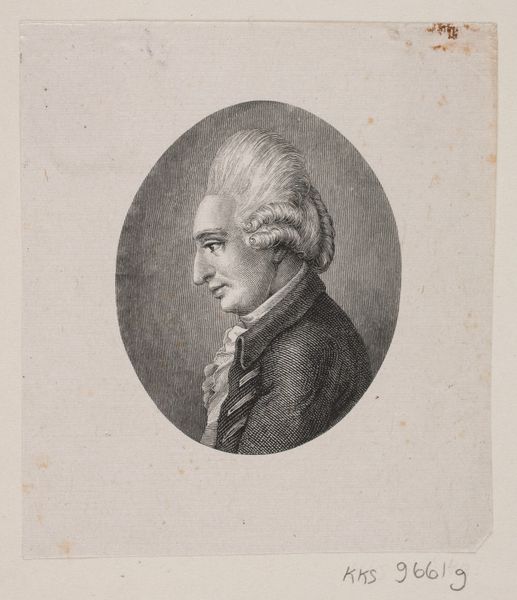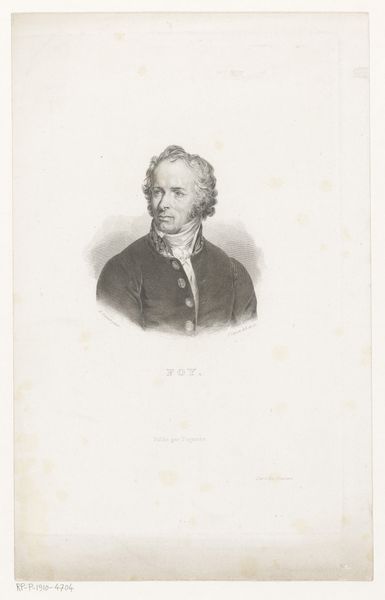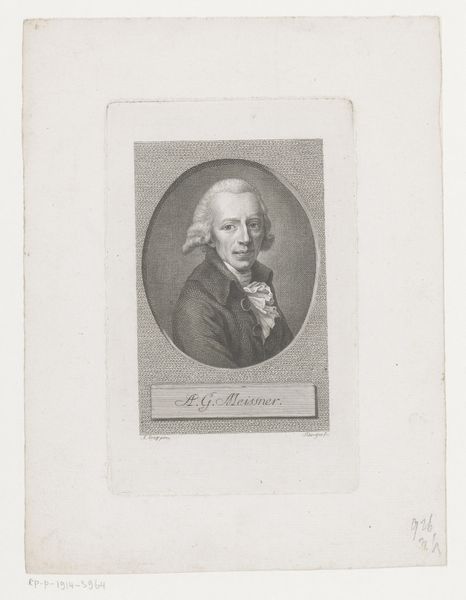
drawing, pencil
#
portrait
#
pencil drawn
#
drawing
#
neoclacissism
#
pencil sketch
#
figuration
#
form
#
pencil drawing
#
pencil
#
line
#
portrait drawing
#
academic-art
Dimensions: height 153 mm, width 127 mm
Copyright: Rijks Museum: Open Domain
Curator: Good afternoon, everyone. We’re standing before a delicate pencil drawing entitled "Portret van John Fitzgibbon." It’s from between 1773 and 1840, created by Amalie Baader. Editor: My first thought? Serenity, almost unsettlingly so. Look at the precise, neat lines and how they contrast with the man’s somewhat melancholy gaze. Curator: Baader definitely leans into the Neoclassical style here, right? Think about the emphasis on line, form, the almost sculpted quality of the portrait. There’s a coolness, a restraint. It aligns with the period’s emphasis on reason and order. Editor: Absolutely, but that serenity—for whom was it intended? Fitzgibbon was a key legal figure during the period of intense political upheaval in Ireland, deeply involved in acts that disempowered Catholics. To what extent is this tranquil portrait an act of erasure? A sanitization of his involvement in injustice? Curator: Ah, the uncomfortable truths bubbling beneath the surface! It's funny, I was just thinking about the way Baader uses line—how incredibly detailed the face is compared to the relative simplicity of the clothing. She seems fixated on revealing something about his character through his features. Editor: Perhaps it speaks to the way powerful men were and still are carefully portrayed. Every smoothed line, every delicate shading, hides perhaps as much as it reveals. It's all about control. Note the rigid frame of the oval too—as though determined to contain not just the man’s image but the legacy itself. Curator: Right, and even though it's "just" a pencil drawing, the piece manages to convey a real sense of the man's presence, you know? Almost as if he might start talking. Does that make sense? Editor: It does, and that tension – between the life implied and the truths suppressed – becomes, for me, where its power truly resides. It makes one think about representation itself and all its complicated politics. Curator: What a way to look at it! I'll never see it quite the same way again. Editor: Exactly. Isn’t that the beauty of art—the dialogues it provokes about history, power, and ourselves?
Comments
No comments
Be the first to comment and join the conversation on the ultimate creative platform.
